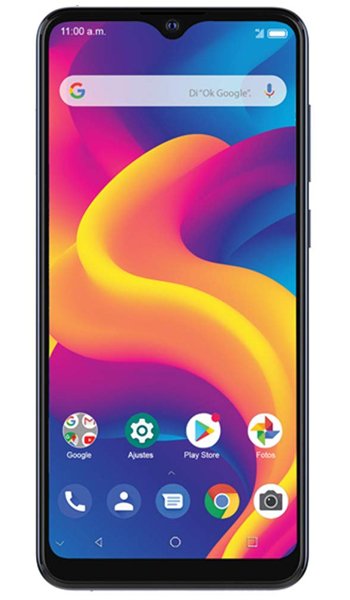HiSense Hisense H40 vs ZTE Blade A7s 2020 Comparison and Differences
Smartphone 1

HiSense Hisense H40
Smartphone 2

ZTE Blade A7s 2020
Smartphone 3
HiSense Hisense H40 or ZTE Blade A7s 2020 Specs Comparison
or
 Common specs
Common specs
| Brand and model | HiSense Hisense H40 | ZTE Blade A7s 2020 | |
| Rating | (+0) | (+0) | |
| Release date | May, 2020 | 2020, November 03 | |
| Dimensions (HxWxD) | 163.7 x 77.1 x 8.8 mm | 6.44 x 6.44 x 3.04 in | 164.7 x 77.4 x 8.2 mm | 6.48 x 6.48 x 3.05 in | |
| Weight | 185 g | 6.53 oz | 182 g | 6.42 oz | |
| Body Build | Plastic | ||
| Case | buy from Amazon | buy from Amazon | |
| Colors | Black, White | Black, Blue | |
| Battery | 4510 mAh, Li-Polymer, non-removable | 4000 mAh, Li-Ion, non-removable | |
| Approximate price | 120 EUR | ||
| Check price | from Amazon | from Amazon |
 Screen
Screen
| Technology | IPS LCD | ||
| Touchscreen | capacitive touchscreen | capacitive touchscreen | |
| Display colors | 16M | 16M | |
| Screen size | 6.53" in | 6.5" in | |
| Screen area | 103.7 cm2 | ||
| Screen format | 19.5:9 (height:width) | 19.5:9 (height:width) | |
| Screen to body ratio | 84% | 81.4% | |
| Screen resolution | 1080 x 2340 px | 720 x 1560 px | |
| Screen PPI /points per inch/ | 395 PPI | 264 PPI | |
| Screen protection | Scratch resistant | ||
| Screen protector | buy from Amazon | buy from Amazon |
 Camera and Video
Camera and Video
| Rear camera, main | 48 MP, Quad | 16 MP, Triple | |
| Camera specs | -48 MP, Unknow, 1/2, (wide), 0.80 µm -8 MP, ƒ/ 2.2, (ultrawide), -2 MP, (depth), -2 MP, ƒ/ 2.4, (macro) |
-16 MP, (wide), AF -8 MP, f/2.2, 120˚, 16mm (ultrawide) -2 MP, f/2.4, (depth) |
|
| Functions | Dual LED flash | LED flash, HDR, panorama | |
| Video | 1080p video | 1080p@30fps | |
| Front camera, selfie | 25 MP, Single | 8 MP, Single | |
| Specifications | 25 MP, ƒ/ 2.0 | 8 MP | |
| Video | 1080p@30fps |
 Performance
Performance
| Operating system - OS | Android 10 Q | Android 10 | |
| Chipset | - MediaTek Helio P70 (MT6771T) (12 nm) | - Unisoc SC9863A (28nm) | |
| CPU | - Octa-Core (4x Cortex A73 2.1 GHz + 4x Cortex A53 1.95 GHz) | - Octa-core (4x1.6 GHz Cortex-A55 & 4x1.2 GHz Cortex-A55) | |
| GPU | ARM Mali-G72 MP3 | IMG8322 | |
| External memory | microSDXC | ||
| Internal memory | 4GB 128GB, 4GB · 128GB | 64GB 3GB RAM |
 Benchmark
Benchmark
| Antutu 9 Total | 113890 | ||
| Antutu 8 Total | 184569 |
 Communication and Connectivity
Communication and Connectivity
| SIM card | Dual SIM, dual stand-by (Nano SIM + Nano SIM) | Dual SIM (Nano-SIM, dual stand-by) | |
| Network | 2G / 3G / 4G / | GSM / HSPA / LTE | |
| Bands | -2G - B2 (1900), B3 (1800), B5 (850), B8 (900) -3G - B2 (1900), B4 (1700/2100 AWS A-F), B5 (850) -4G - B2 (1900), B3 (1800), B4 (1700/2100 AWS 1), B5 (850), B7 (2600), B12 (700), B28b (700), B28a (700) |
-2G - GSM 850 / 900 / 1800 / 1900 - SIM 1 & SIM 2 -3G - HSDPA 850 / 900 / 1900 / 2100 HSDPA 850 / 2100 -4G - 1, 3, 7, 8, 28 |
|
| Speed | HSPA 42.2/5.76 Mbps, LTE Cat4 150/50 Mbps | ||
| GPRS | Yes | Yes | |
| Edge | Yes | Yes | |
| Wi-Fi | 802.11a, 802.11b, 802.11g, 802.11n, 802.11n 5GHz, 802.11ac,Dual band ,Wi-Fi Hotspot ,Wi-Fi Direct ,Wi-Fi Display | Wi-Fi 802.11 b/g/n, Wi-Fi Direct, hotspot | |
| GPS | GPS, A-GPS, GLONASS, Beidou | Yes, with A-GPS | |
| NFC | No | Yes | |
| USB | Yes, USB Type C, USB On-The-Go (OTG) | Yes | |
| Bluetooth | Bluetooth 4.2, A2DP, LE | 4.2, A2DP |
 Music and Audio
Music and Audio
| Radio | Yes | FM radio | |
| Headphone jack | Yes | Yes |
 Other features
Other features
| Sensors | - Fingerprint (rear-mounted), Proximity, Accelerometer, compass, gyro , Infrared port | - Fingerprint (rear-mounted), accelerometer, proximity | |
| Other extras | |||
| Versions |
- Also known as Optus X Pro |
Reviews and Opinions on HiSense Hisense H40 and ZTE Blade A7s 2020
If you had to recommend one of these phones to a friend, which one would it be and why? Share your arguments using the Add Opinion button!
